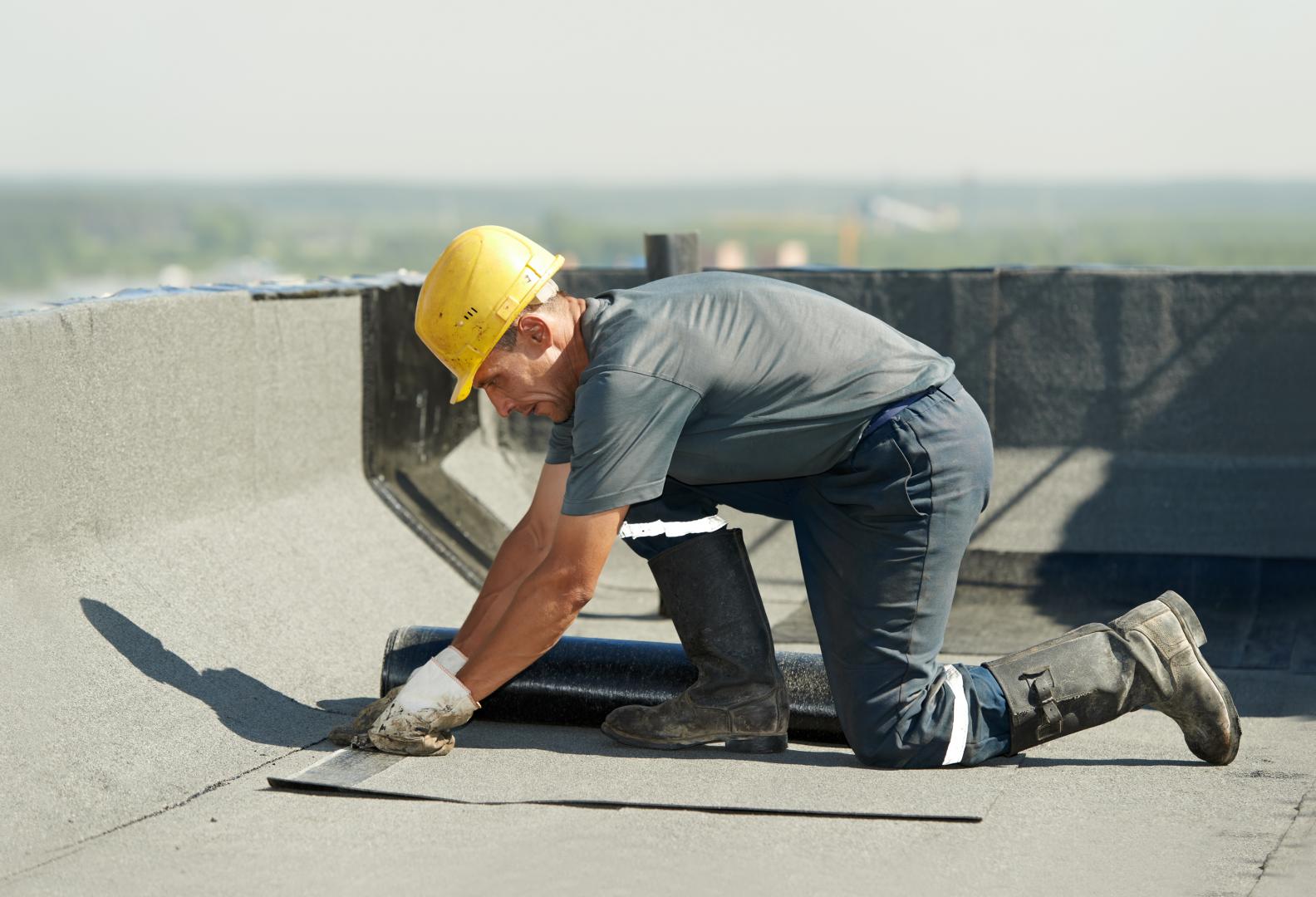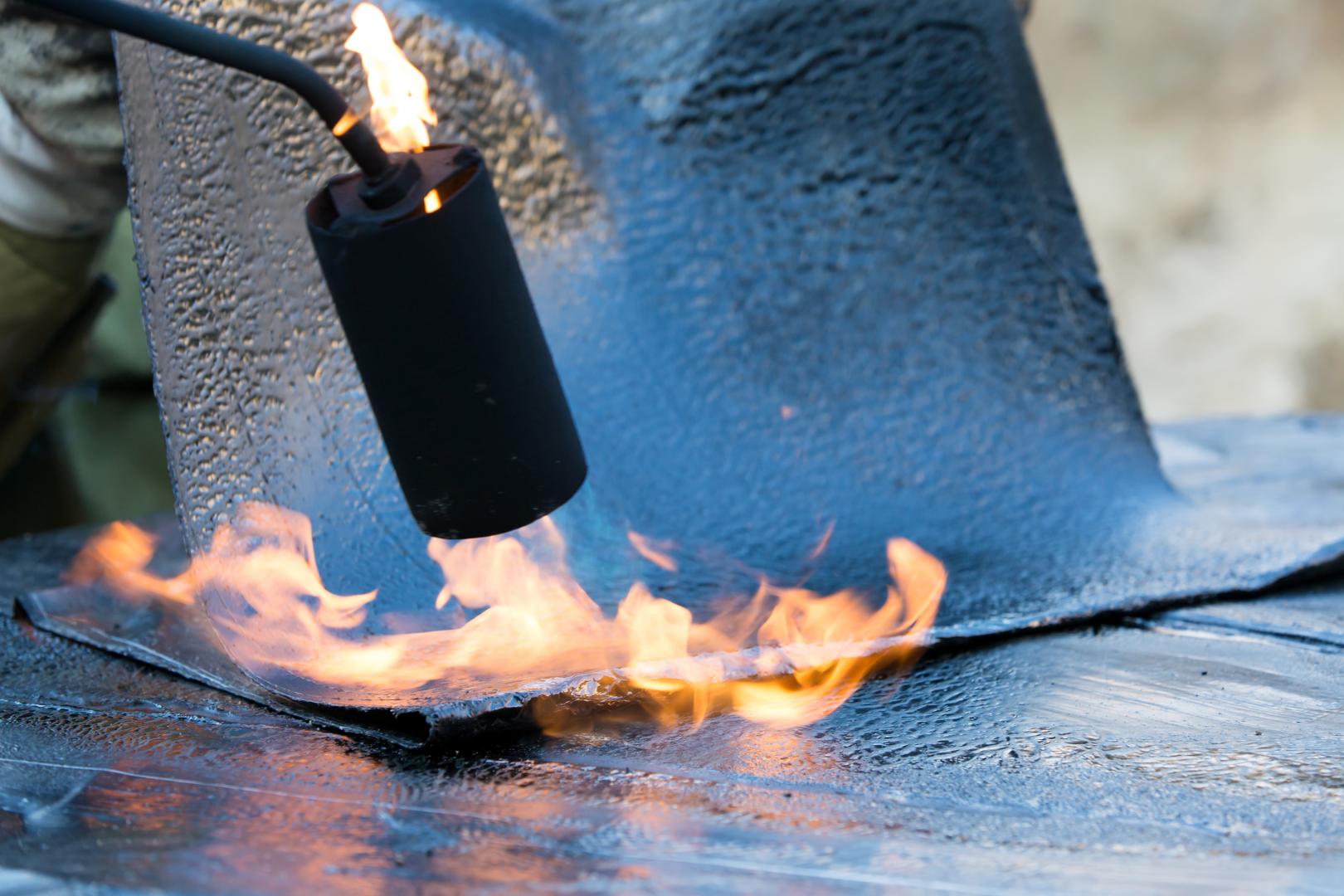Flat Roof
Choice of flat roof membrane
multi-layer, two-layer or single-layer? Wednesday, 27. April 2011 8:55 | Author: Yves Perrier
Many basin-type flat roofs are built on multi-family commercial and residential buildings in Quebec, especially in large cities. In Montreal, almost all duplexes, triplexes, and other rental multiplexes or condominiums have such roofs. They are called flat roofs but they actually have a slight slope towards central drains that channel rainwater to vertical plumbing pipes that flow into municipal sewers.
Multi-layer membranes: tar and asphalt
The traditional flat roof in Canada was made of multiple layers of hot tarred paper and covered with gravel to protect it from the sun. Tar was banned in the early 1970s to protect workers' health. It was replaced by asphalt, a petroleum product that is less resistant than tar for waterproofing. Multi-layer asphalt membranes last an average of 16 years in Canada. This unsustainable technique is now increasingly being replaced by membrane rolls.
Two-layer elastomeric bitumen membranes
In the 1990s-2010, elastomeric membranes covered 50% of new flat roofs in Canada, mainly in commercial and institutional projects. They consist of a base membrane and a finishing membrane heated with a torch to fuse them together on site. The upper membrane is covered with ceramic granules that give it its colour and protect it from the sun. Introduced in Quebec around 1970, the lifespan of these membranes was initially of about 21 years. However, a properly installed membrane on a well-ventilated roof can last up to 30 years, with little maintenance.
Single-layer membranes
Bitumen roofs have the disadvantage of being non-recyclable. For environmental reasons, EPDM or TPO membranes are increasingly recommended. In addition to being recyclable, they can be light-coloured and reflect sunlight, thus reducing the urban heat island effect. These membranes are single-layered and resemble pool covers with welded joints. They can be resistant to UV rays for a period of 40 to 50 years. Since they have no granules, mono-layer membranes are also easier to wash. They probably represent the roofs of the future for cold climates.
By Yves Perrier 01/03/2011
TPO: (SINGLE LAYER)
It is a membrane that is regularly used on stelldecks where the membrane can be mechanically attached. The membrane is available in three different colours: white, beige and grey. It is the lightest system on the market and is ideal for new car dealerships, IGA markets, Tim Horton and A & W restaurants. The membrane has a 20-year warranty from the manufacturer and the system is guaranteed for 5 to 30 years depending on the customer's requirements.
ELASTOMERIC: (TWO-LAYER)
Dans les années 1990-2010, les membranes élastomère couvrait 50% des nouveaux toits plats réalisés au Canada, mais surtout dans des projets commerciaux et instit In the 1990s-2010, elastomeric membranes covered 50% of new flat roofs built in Canada, mainly in commercial and institutional projects. They consist of a base membrane and a finishing membrane heated with a torch to fuse them together on the decking. The upper membrane is covered with fine ceramic granules that give it its colour and protect it from UV rays. Introduced in Quebec around 1970, the lifespan of these membranes was initially of about 21 years. However, a properly installed membrane on a well-ventilated roof can last up to 30 years, with little maintenance.
BALLASTED EPDM: (MONO-LAYER)
It is a ballasted membrane made up of river stone and represents the most economical solution for commercial buildings. However, it must be ensured that the structure can support the weight. The membrane has a 20-year warranty from the manufacturer and the system is guaranteed for 5 to 20 years depending on the customer's requirements.
EPDM FLEECE-BACK: (MONO-LAYER)
Bonded to asphalt or adhesive, this membrane is used in cases where the structure cannot withstand the weight of a river stone ballast, if you want to have a fully-adhered membrane, or for repair purposes on an existing asphalt and gravel roof. The membrane has a 20-year warranty from the manufacturer and the system is guaranteed for 5 to 15 years depending on the customer's requirements.


